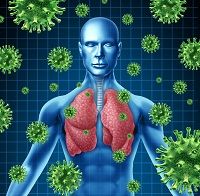Article
Deadly Legionnaires' Disease Outbreak Isn't Over Yet
Author(s):
The latest cases of Legionnaires' disease, which has appeared in several states, is wreaking havoc back in the place where the outbreak all began: New York City.

The latest cases of Legionnaires’ disease, which has appeared in several states, is wreaking havoc back in the place where the outbreak all began: New York City.
Legionnaires’ disease, a type of pneumonia caused by the bacterium Legionella, popped up on the radar in the South Bronx, New York on July 10, 2015. The bacterium grows in warm water in places such as faucets, showers, and water coolers. After testing 17 water coolers, five tested positive for Legionella bacteria and the areas were disinfected; however, 12 people died from the disease in this location.
The outbreak didn’t end there, unfortunately, and in early September six prisoners were sickened by the disease at the San Quentin State Prison in California and dozens more were under observation. Meanwhile, Legionnaires’ disease infected nearly 40 individuals at the Illinois Veterans’ Home-Quincy.
The most recent cases were reported on September 21 in Morris Park, a section of the Bronx. The patients range in age from 45 to 75. The New York City Department of Health and Mental Hygiene verified that this latest outbreak is unrelated to the original NYC cases over the summer. As of September 30:
- 13 people had been diagnosed
- 11 of them were hospitalized
- One of them died as a result of the illness
- One of them was discharged from the hospital
“The Department is taking immediate steps to determine the source and protect people who live and work in Morris Park,” Health Commissioner Mary T. Bassett, said in a statement.
Environmental scientists have taken samples from cooling towers in the area and patients’ medical records are being reviewed. Health officials are especially looking at populations who are more susceptible to illness, such as nursing homes and senior centers.
“I urge all New Yorkers to seek care immediately if they have flu-like symptoms, including fever, cough, headache, or difficulty breathing,” Bassett advised. Keep in mind that Legionnaires’ does not spread between individuals. A person becomes infected by breathing in water vapor that contains the bacteria.
The Centers for Disease Control and Prevention (CDC) identified 10 things that healthcare workers need to know about Legionnaires’ Disease:
1. Diagnosing
- Clinical features: pneumonia, cough, fever
- Incubation period: two to 14 days after exposure
- Outcome: hospitalization common, fatal in 5 to 30% of cases
2. Who to Test
- Patients with severe pneumonia
- Patients who have failed antibiotic therapy
- Patients suspected of healthcare-associated pneumonia
- Patients who have traveled within two weeks before illness onset
- Patients with immunocompromised host with pneumonia
3. How to Test
- Culture
- Urine antigen
- Paired serology
- Direct fluorescent antibody stain
- PCR
4. Respiratory Specimen for Diagnosis
- Urine antigen testing may be convenient, however, isolating respiratory secretions (such as lung tissue, pleural fluid, or a normally sterile site) is important for investigation.
- Both clinical and environmental isolates are necessary.
5. Preferred Treatment
- Guidelines for when a patient is diagnosed with Legionnaires’ Disease
6. Ask Patients About Travel
- More than 20% of cases are linked to recent travel
- Difficult to detect in travelers because of < 5% attack rate
- Reporting travel-associated cases allows for earlier control of the illness
7. Frequency of Disease
- Cases are under-reported and diagnostic testing is under-used
- About 8,000 to 18,000 patients are hospitalized in the US each year for the disease
- Travel-associated, community-based, healthcare, and occupational outbreaks are common
8. Sources of Legionella
- Drinking water systems, whirlpool spas, and cooling towers (if these three conditions are present): transmission-heat, stasis, and aerosolization
- Found in natural, freshwater environments — but do not cause the disease due to insufficient amounts
9. Risk Factors
- Older than 50 years of age
- Diabetes
- Smoking
- Immune system disorders
- Systemic malignancy
- Renal or hepatic failure
- Exposure to whirlpool spas
- Recent travel — overnight outside of the home
- Recent repairs or maintenance on domestic plumbing
10. How to Report Diagnosis
- Find state health department and submit case report form





